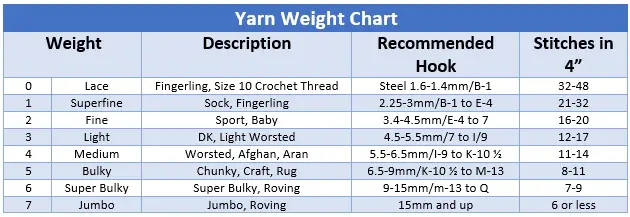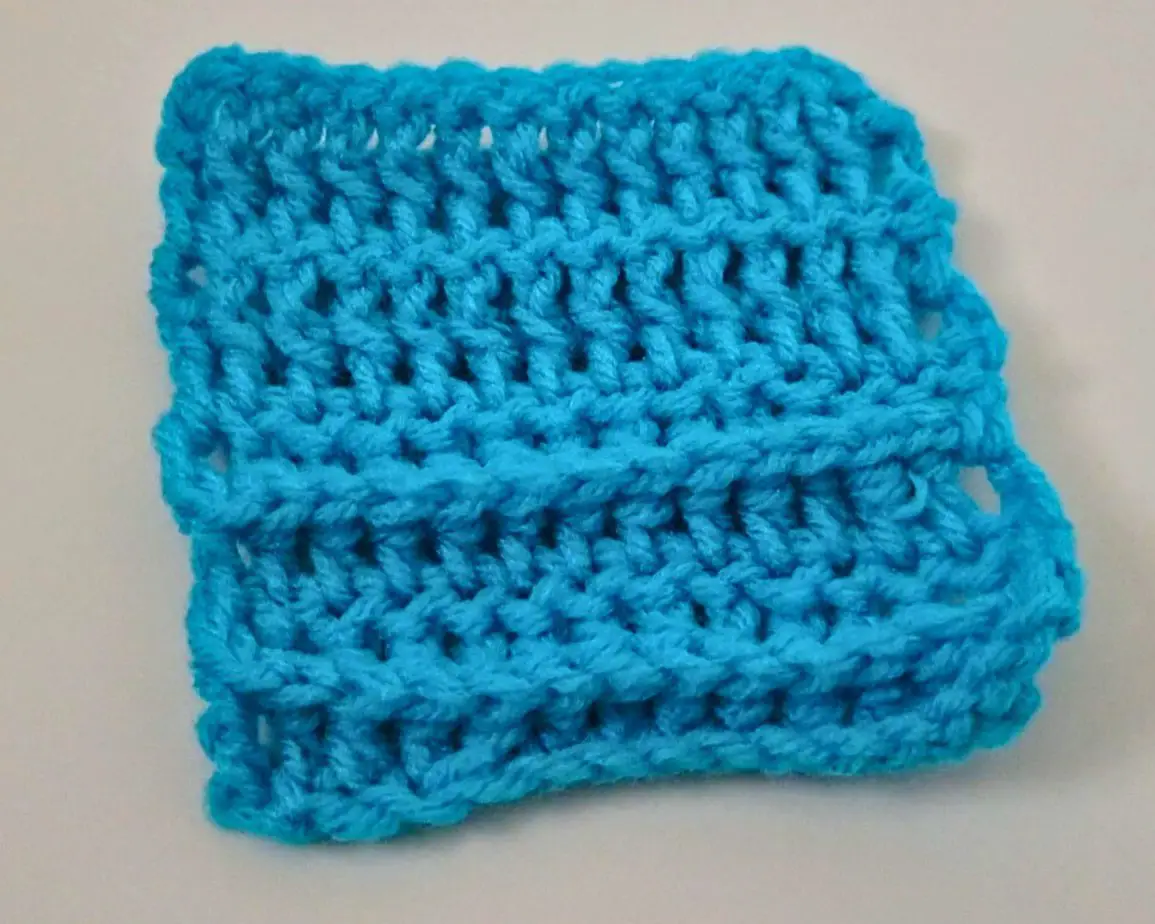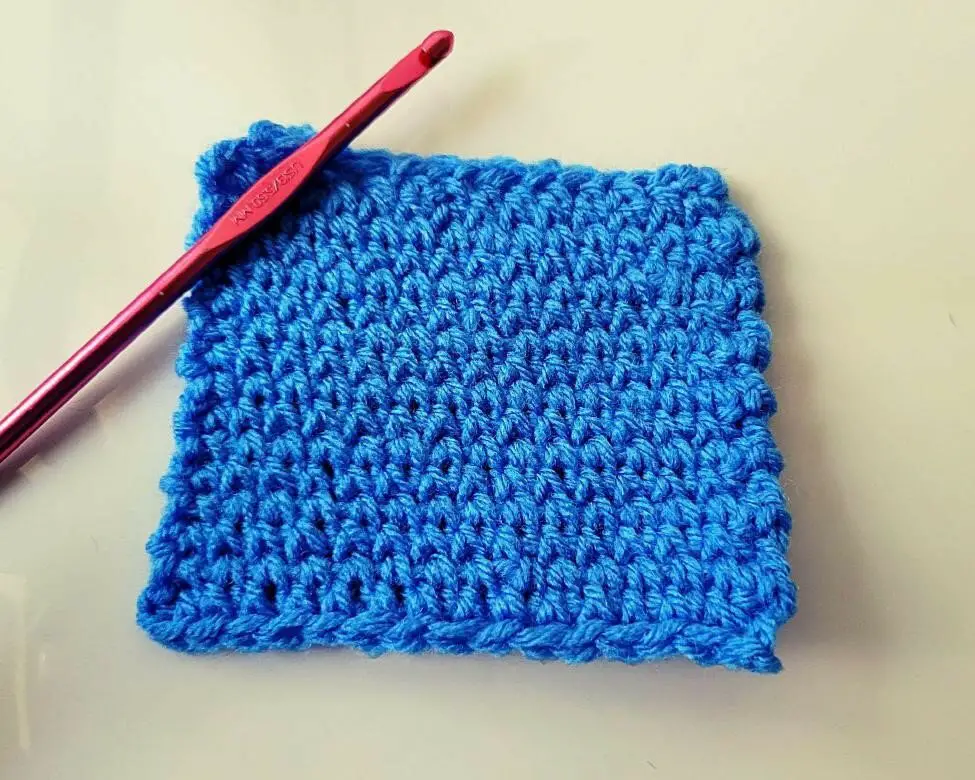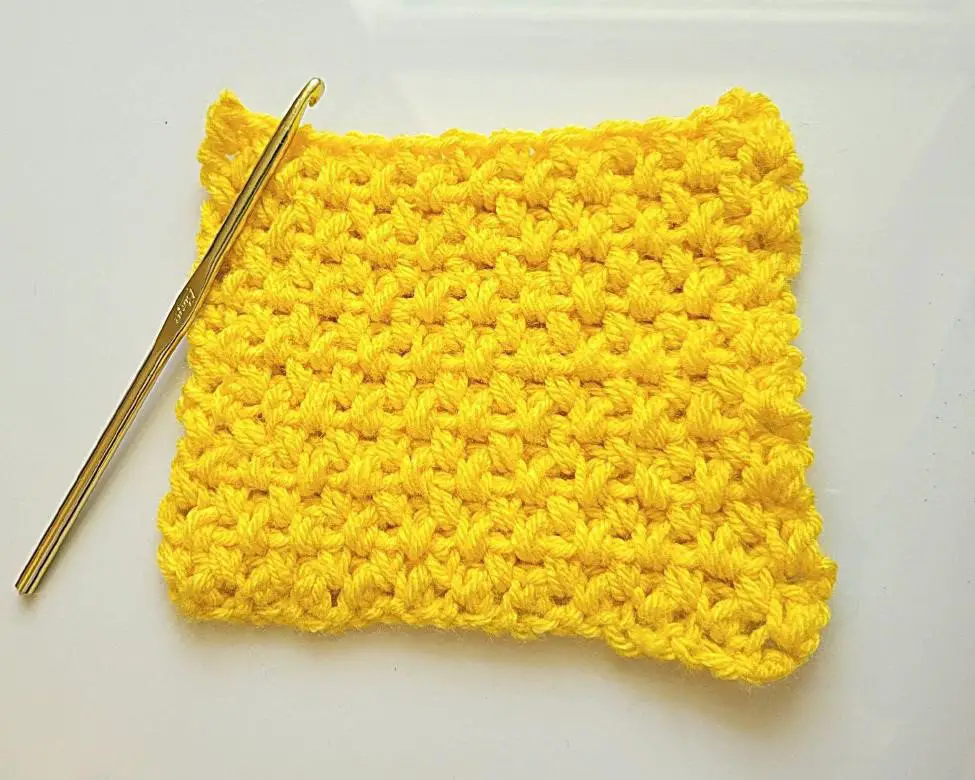Planning a crochet project is fun and exciting. All the choices of colors and yarn types make the planning stage of a project very enjoyable. Today I thought I’d share some tips and advice about planning your first crochet blanket. What size will your blanket be? Is it for an adult, child, or baby? What type of yarn will you use and what will be your color scheme? All these things need to be taken into consideration in the planning stage of your project.

What Size?
One of the first decisions is what size will your crochet blanket be? The following table lists many different sizes for you to choose from.

These sizes aren’t written in stone and you can adjust them as you like.
What Color Scheme?
One of my favorite things about planning a project is deciding on the colors. There are so many colors to choose from it may seem like a daunting task. Colors generally fall into two categories; warm and cool. Warm colors include orange, orange red, yellow green, brown, gold, and beige. Cool colors include blue, blue green, purple, and ruby. Neutral colors include black, white, and gray.

Artists and designers rely on the color wheel to help them choose colors. Primary colors include red, yellow, and blue. These are colors which are the base of all colors in the visual spectrum.
Secondary colors are green, violet, and orange. These colors are produced by blending primary colors.
Tertiary colors include yellow orange, red orange, red violet, blue violet, blue green, and yellow green. Tertiary colors are a mixture of primary and secondary colors. Each color also has its own shades and tints.
How you combine colors will determine the color scheme of your project. Do you want your blanket to have a vibrant scheme or a more calming one? Warm colors tend to be more vibrant while cool colors have a more calming effect.
There are several color schemes for you to choose from.
- Complimentary colors are opposites on the color wheel. Green/red, orange/blue, and yellow/violet are complimentary colors. The use of complimentary colors creates a very vibrant color scheme.
- Analogous color schemes match well and can create a serene feel. They use colors which are next to each other on the color wheel. Generally one color is the dominate choice and the other colors compliment it.
- A Triadic color scheme uses colors which are evenly spaced around the color wheel. For example, blue, green, and orange is an example of a triadic color scheme.
- The split-complementary color scheme uses three colors, a base color and two colors adjacent to its complementary color. Green, red-violet, and red-orange are examples of split-complementary colors.
- A tetradic, or rectangle, color scheme employs two complementary pairs of color for a total of four colors. The colors form a rectangle on the color wheel. One example would be to use red, green, blue, and orange. It is best if you choose one color to be dominant since this is a very vibrant color scheme.
- The square color scheme also uses four colors. The colors are evenly spaced around the color wheel to form a square. An example of a square color scheme would include red, yellow, green, and blue. This type of color scheme also works best if you choose one color to be dominant.
Once you decide on a color scheme your next step should be to choose a neutral color to balance everything out. If you are using jewel tones, black is a stunning choice. When used as the joining color in a cool jewel toned scheme black creates a very pretty contrast. White looks good with lighter colors such as pastels. Gray, off-white, beige, and sometimes navy are also considered neutral colors. Neutral colors help balance your project and keep it from becoming too busy.
What Kind of Yarn?
They type and weight of yarn you choose is important as it will affect the size of your project. Just like hook size, yarn weight and fiber content are important choices. Thicker yarn takes less yarn than thinner, but if you’re using a delicate or complicated stitch pattern thick yarn sometimes does not highlight your stitches like a thinner yarn would.
Each weight of yarn has a gauge. Gauge is the amount of stitches across a row and how many rows it takes to create a 4 by 4 inch square of fabric. If you look at the following table, you can see how yarn weight affects gauge.

A medium weight yarn has a gauge of 11 to 14 stitches per 4 inches where a fine sport weight yard has a gauge of 16 to 20 stitches per 4 inches.
Not only is the weight of yarn important, but the fiber content is also a consideration. Acrylic is easy to care for and easy to work with. It is suitable for most projects. Cotton is another good choice for blankets. Cotton is also easy to care for and work with. It is good for baby blankets since it wicks away moisture and doesn’t have fibers that could hurt baby if they chew on it. Keep in mind that while wool and other animal fibers create a soft lofty blanket, they do take more care.
Always read the yarn label for the weight, fiber content, recommended hook size, and the gauge. Most labels also provide care instructions. The care instructions are a standardized set of symbols used in the industry. The Lion Brand Yarn Company has a complete set of laundry care symbols on their website.

On this label for Red Heart Super Saver yarn you can see this is a medium weight acrylic yarn. The recommended hook size is I/9. Using this hook size, the gauge is 12 stitches across a 4 inch row, and 5 rows in a 4 inch swatch of crochet fabric. According to the laundry care symbols you may machine wash and dry this fabric, but you may not bleach it or use an iron on it.
Figuring the Foundation Chain Length
Once you decide how large your blanket will be, and what yarn you will use it is now time to figure out the foundation chain length. Don’t worry, it’s not high level math and we’ll take it step by step. Let’s say you want to make a lapghan. The measurements for a lapghan is 36 inches by 48 inches. For this example we will figure our calculations based on using a medium weight yarn.
On an average medium weight yarn has 12 stitches per 4 inches. If we break that done to 1 inch we have 3 stitches per inch. The width of our project is 36 inches so we need to multiply 3 by 36 which equals 108. Your foundation chain need to be 108 stitches long to equal 36 inches.
3 stitches per inch
36 total inches
3 X 36 = 108 stitches
Or if you want to get technical use this formula: B/4 = A
A x Y = Z
B = number of stitches in 4 inches of fabric according to yarn weight
A = stitches per inch
Y = width in inches
Z = total stitches
Simply plug in the numbers according to the weight of yarn you are using and the width of your project.
Calculating How Many Squares You Need
If you are crocheting a blanket that uses squares or motifs it is also easy to figure out how many you will need to complete your project. Let’s use the same measurements for a lapghan, 36 by 48 inches. If your squares are 6 by 6 inches you will need 6 across the width (6 X 6 = 36) and 8 (8 X 6 = 48) down the sides. Multiply these two numbers to get the total number of squares you will need to complete your project. To complete the lapghan you will need a total of 48 squares if they measure 6 inches square.
Let’s say you are using a smaller square, 3 by 3 inches square. If your width is 36 you will need 12 squares to create the width, and 16 squares to obtain the correct length. Multiply 12 by 16 and you will need 192 squares.
A = width of project
B = length of project
C = measurement of squares
D = number of squares needed
A/C = E number of squares for width
B/C = F number of squares for width
E x F = D.
Basically, take the measurement of the square and divide it by the width and length of the project, and take these two number and multiply them. This gives you the total number of squares you need.
Choosing a Pattern
There are so many patterns to choose from. Choosing one may be a challenge. If you are a beginner you’ll want to choose a pattern which is easy and within your skill. You may consider Granny squares, a simple double crochet pattern, double crochet with stripes, or the classic ripple or chevron pattern. If you’re up to more of a challenge, try the popular Corner 2 Corner (C2C) pattern. The Catherine Wheel or Bavarian crochet are also easy yet challenging patterns.

I made this large Granny square out of some extra yarn I had.

The Catherine Wheel is a fun pattern. It looks very nice when you vary the colors like in this example.

Bavarian crochet may be a yarn eater, but it is a fun and pretty pattern.
More Free Patterns
If you enjoyed this pattern you might want to take a look at our Cushy Crochet Cowl and Summer Beach Crochet Tote with detailed instructions and pictures that will take you from start to finish.
End Notes
You can find lots of free patterns online and I’ll be posting free patterns in this blog from time to time. I hope this blog has inspired you to try your hand at your first blanket or afghan. Handmade crochet blankets and afghans are thoughtful gifts which become treasured family heirlooms. Whether you are making a crochet blanket for you or for a loved one, the finished project will be worth all of your planning and hard work.
Thanks for stopping by and until next time, keep on hooking!
If You Enjoyed this Article Please Share and Pin. It is Greatly Appreciated. 🙂


